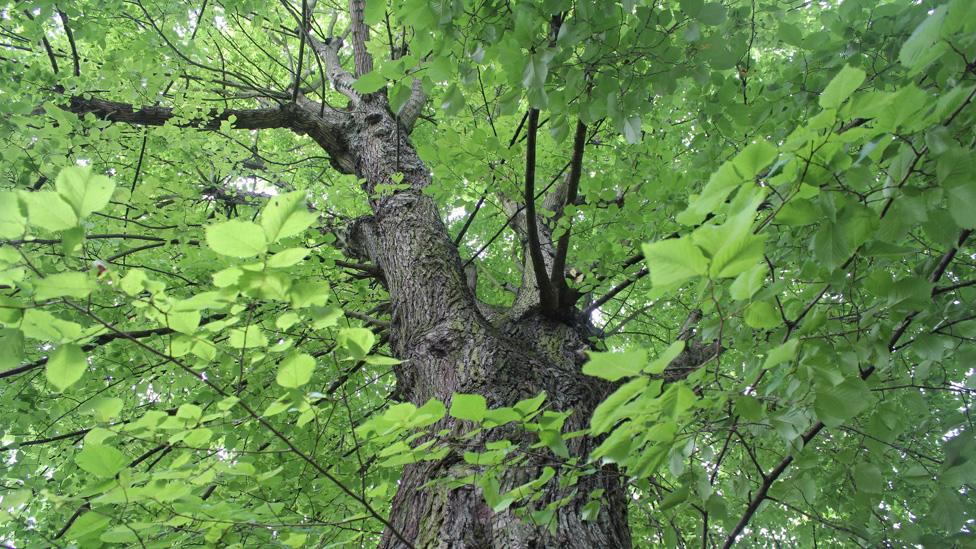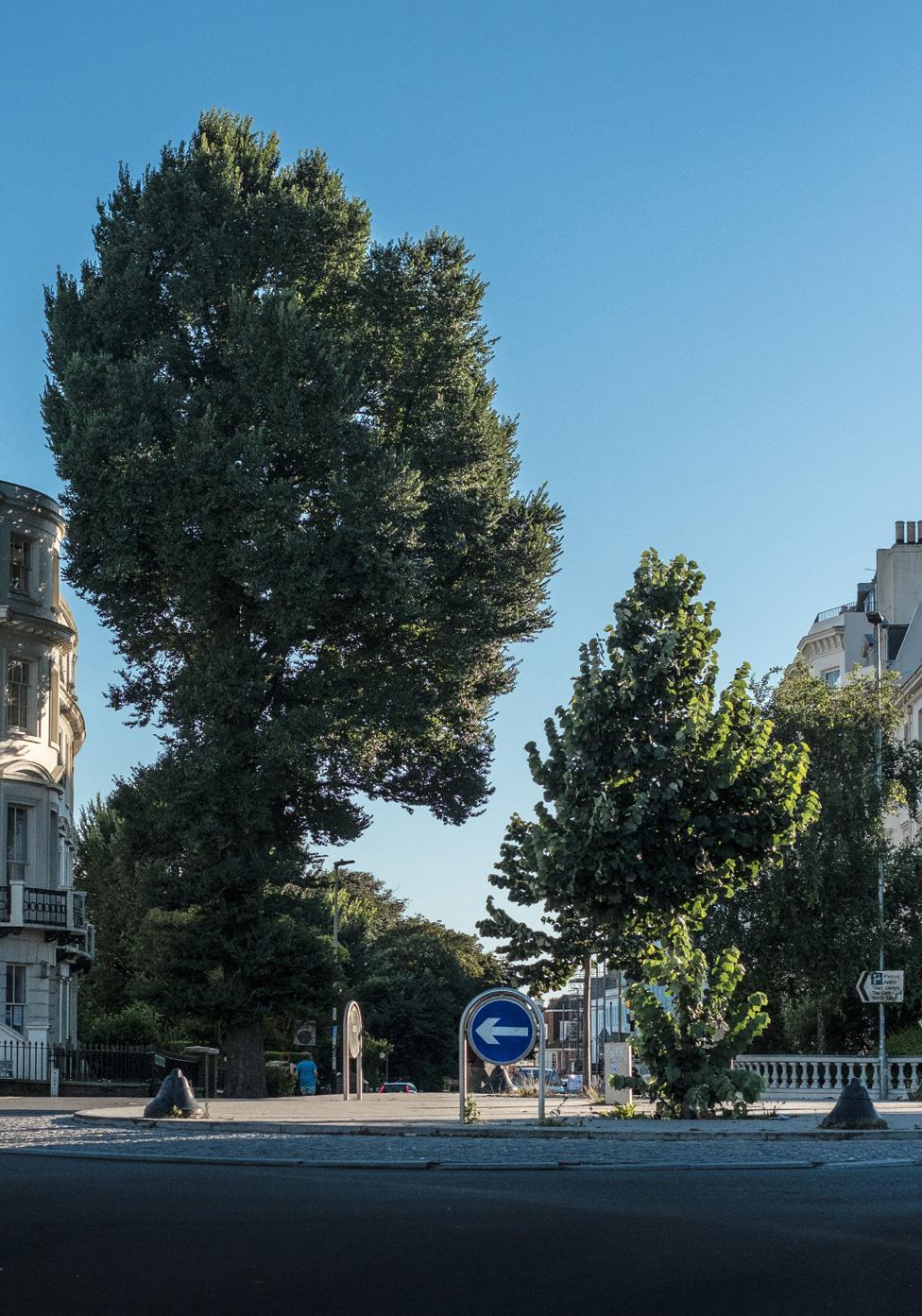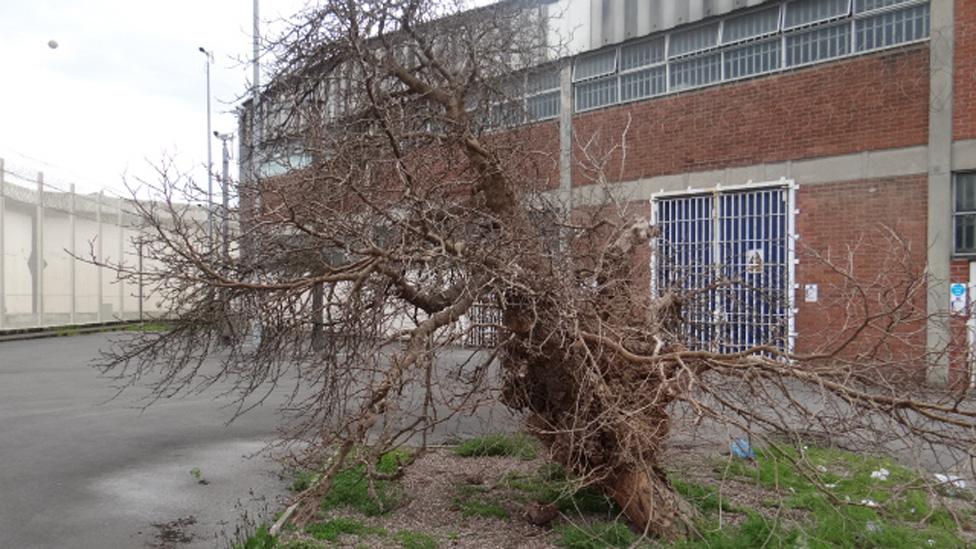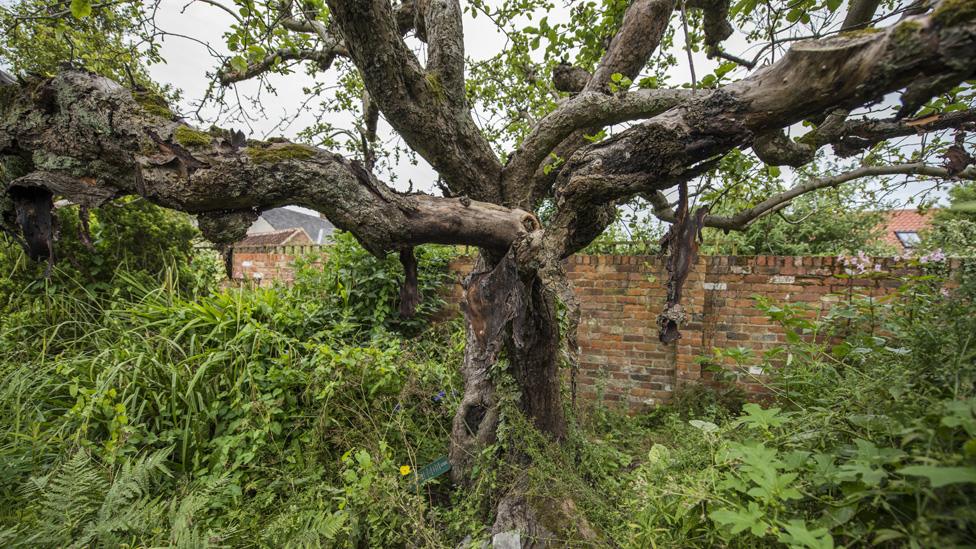Nominations announced for England's Tree of the Year award
- Published

The Sycamore Gap featured alongside Kevin Costner in the film Robin Hood Prince of Thieves
A 1,000 year-old oak and a sycamore that featured in a Hollywood blockbuster are among the finalists for England's Tree of the Year award.
The 10 trees have been nominated by members of the public for the competition run by the Woodland Trust charity.
A public vote will decide the winner, which will then compete against trees from across the Continent for the title of European Tree of the Year.
The online voting, external ends on 9 October.
The Woodland Trust said a panel of experts whittled down 200 public nominations based on the nominees' story,
The winning tree will benefit from a care grant of £1,000 and any tree receiving over 1,000 votes will receive a grant of £500.
Nominations include the "Sycamore Gap" tree near Hadrian's Wall in Northumberland. It appeared alongside Kevin Costner in the 1991 film Robin Hood Prince of Thieves.

The Chelsea Road Elm in Sheffield faces being cut down
Another finalist is a tree in Sheffield which is threatened with felling as part of the city's street improvement scheme.
Local campaigner Paul Selby, who nominated the tree, said "Reaching the shortlist for Tree of the Year highlights the national importance and recognition of the Chelsea Road Elm Tree.

A public campaign saved the Seven Dials Elm in Brighton
Another nominee that was facing the axe is the Seven Dials Elm tree in Brighton.
The 130 year old tree was due to be chopped down as part of a new road scheme. Following a public campaign the road was rerouted.

The Bowethorpe Oak in Lincolnshire once had parties held in its hollow trunk
The oldest tree on the list is the Bowthorpe Oak, which stands in a field in Manthorpe, Lincolnshire.
It is more than 1,000 years old and its hollow trunk has been used for parties.

Prisoners in Wakefield Prison exercise yard used to dance around the Mulberry
Another contender is the mulberry that stands in the grounds of Wakefield Prison which it is thought may have inspired the nursery rhyme Here We Go Round the Mulberry Bush.
Women prisoners were said to have made up the rhyme as they danced around the tree with their children in the former House of Correction's exercise yard.

The tree in Southwell, Nottinghamshire is the origin of all modern Bramley apples
The "mother" of all modern Bramley Apple trees is another finalist.
Planted at Southwell in Nottinghamshire more than 200 years ago cuttings from the tree were transplanted across across the UK in the 19th Century.
Other nominees include the Howletts Sweet Chestnut, Canterbury, Kent, the Umbrella Tree at Levens Hall, Cumbria, the King John's Oak in Shute Park, Devon and Old Knobbley, in Mistley, Essex.